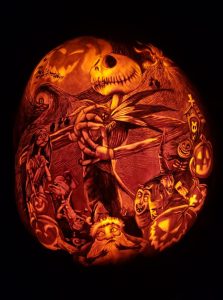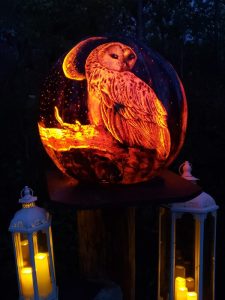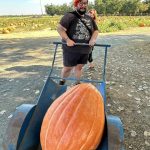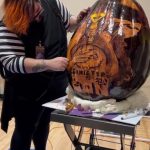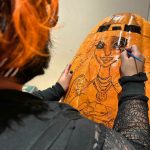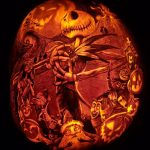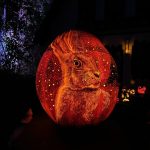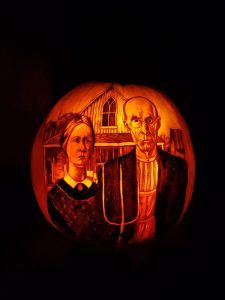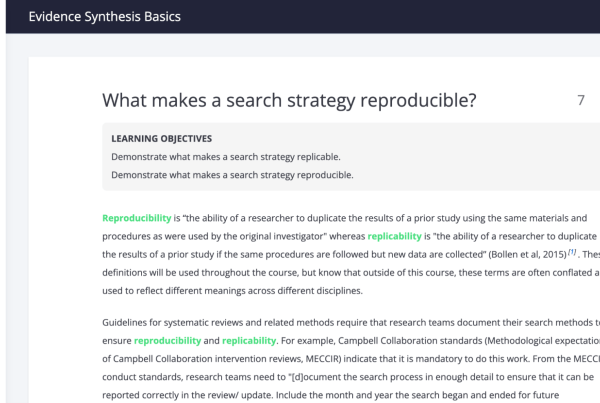Carving an artistic Jack-O-Lantern isn’t as difficult as it seems. Just ask Justin Boeser, a student supervisor at Magrath Library and part-time professional pumpkin carver.
“It almost doesn’t even matter what you put on ’em sometimes, because they’re just beautiful by default. You might be surprised at how great your doodle looks,” he said.
Granted, Boeser has been an artistic person since the dawn of Pokémon. He filled notebooks with doodles of different Pokémon, and things escalated when he started drawing mermaids. As soon as he figured out how to curve the mermaid’s tail, it was over.
Boeser is a California native, but moved to Minneapolis when he was 7. After finishing high school at the Perpich Center for Arts Education in Golden Valley, he moved back to California to study art at Solano Community College and the University of California, Davis.
He lived in California for 12 years, working as a library services assistant for Sacramento Public Library, a library supervisor for Placer County Library, and briefly as an art instructor.
Though Boeser loves all things spooky and scary, pumpkins are not his go-to medium. He likes the old school methods: pen-and-paper drawings, black-and-white ink drawings, and paintings. He still draws mermaids once in a while, but he’s added more subjects to his repertoire, including family and pet portraits.
Boeser discovered the world of professional Jack-O-Lanterns at a pumpkin carving event in college and was thoroughly impressed by the art. His family encouraged him to learn, but Boeser never seriously considered it. Just cause he could draw portraits, doesn’t mean he could carve pumpkins.
Eventually Boeser moved back to the Twin Cities, partly because he missed home, and partly to escape California’s heat, wildfires, and cost-of-living.
“I missed the community here. Honestly, I missed the art here,” he said.
Almost by chance, he saw a Craigslist ad for pumpkin artists to work at the Minnesota Zoo for the annual Jack-O-Lantern Spectacular. He submitted his art portfolio and was quickly invited to carve an audition pumpkin. His first foray “wasn’t very good,” but it was good enough for the job.
“It just very quickly became such a huge part of my life starting maybe the week after that. And it’s been a huge part of my life ever since,” he said. “I didn’t know that pumpkin art was something I could do. Again, I had never tried it, but now it’s my thing.”
There was a learning curve to Jack-O-Lanterns, literally. Translating a two-dimensional drawing on paper to a three-dimensional object — which is essentially a misshapen sphere with grooves, ridges, and bumps — isn’t so straightforward.
Tip: Forget everything you know about traditional art
Boeser’s first recommendation: forget everything you know about traditional art, because the pumpkin carving craft has all new fundamentals and properties.
Like onions and ogres, pumpkins have layers. The outermost layer is dark, while the innermost layer is light. And between those two values is an array of colors. So if you want to elevate your basic Jack-O-Lantern don’t carve completely through the pumpkin.
To explore the gradient, professional pumpkin carvers use sculpting and fleshing tools, keyhole saws and x-acto knives, hole cutters and fine cutters, and even needles and sharpened bobby pins. For the at-home carver, a cheap wood chisel, speedball carving tool, kitchen knife, and sandpaper will do the trick.
“It’s how you create things that look three-dimensional, like you would with a drawing. Instead of shading with a pencil, you’re shading with sandpaper,” Boeser explained.
But pumpkins and paper are kind of opposites. With drawings, the white page provides the highlights, while your pencil draws the shading. But with Jack-o-Lanterns, the pumpkin provides the shading, while carving provides the highlights.
“It’s not about putting down more shading, it’s about pulling out the light,” he said. “Just make some marks on a pumpkin, and see what happens when you light it up. The possibilities are infinite. You can really draw anything on a pumpkin.”
- Justin Boeser went pumpkin shopping before the 2023 Sinister Halloween Convention in Sacramento. Courtesy of Justin Boeser (@justingregoryyy)
- Justin Boeser carves a pumpkin for the 2023 Sinister Halloween Convention in Sacramento. Courtesy of Justin Boeser (@justingregoryyy)
- Justin Boeser carves a pumpkin for the 2023 Sinister Halloween Convention in Sacramento. Courtesy of Justin Boeser (@justingregoryyy)
- Justin Boeser carves a pumpkin for the 2023 Sinister Halloween Convention in Sacramento. Courtesy of Justin Boeser (@justingregoryyy)
- Justin Boeser was invited as a featured artist for the 2023 Sinister Halloween Convention in Sacramento. Courtesy of Justin Boeser (@justingregoryyy)
- A Jack-O-Lantern of “The Nightmare Before Christmas.” Courtesy of Justin Boeser (@justingregoryyy)
- A Jack-O-Lantern of Queen Akasha from “Queen of the Damned.” Courtesy of Justin Boeser (@justingregoryyy)
- A Jack-O-Lantern of “Bram Stoker’s Dracula.” Courtesy of Justin Boeser (@justingregoryyy)
- A Jack-O-Lantern of a rabbit. Courtesy of Justin Boeser (@justingregoryyy)
Don’t get too ambitious
Another tip: don’t get too ambitious. Start small with simple doodles, and see what the different tools and techniques produce when you light up the Jack-O-Lantern. Over time, your pumpkins will get more intricate.
After years of carving practice, Boeser is still learning. He typically starts by projecting an image onto the pumpkin, then tracing the general shapes. Sometimes he spends too long drawing complex sketches that eventually get erased.
For the advanced Jack-O-Lanterns, the process needs constant readjusting, so the final product doesn’t look distorted.
“You could very easily have someone’s eye migrate from where it should be,” he said. “It’s really, really, really easy for that to happen.”
Boeser is most proud of carving a giant Jack-O-Lantern with characters from “The Nightmare Before Christmas,” but he also loves his pumpkin of Queen Akasha from “Queen of the Damned.”
Final tips…
Some final tips, a hand mixer can help loosen the pumpkin guts, and carve your hole on the bottom, so the candle has a flat surface to rest on.
Spraying water and bleach inside the pumpkin can help keep pests away, especially fruit flies, but it won’t extend your pumpkin’s lifespan longer than an extra day.
At the Jack-O-Lantern Spectacular, the Minnesota Zoo has crews that routinely scrap out the mold and bugs, and cycle out the decayed pumpkins. When the weather is cold and dry, they can last a few weeks. But in heat and rain, they last two or three days, Boeser said.
The pumpkin seeds make great snacks, of course, but they’re also great for composting and gardening. Boeser is planning to plant some pumpkin seeds in his backyard this year. And when the pumpkin shell starts to sag, ferment, and grow mold, it also makes good compost material.
“Don’t sell yourself short if you are wanting to try artistically carving pumpkins, even if you’re not a fancy artist, or even if you don’t know all these techniques,” Boeser said. “My big piece of advice is to just do it. It’s a piece of fruit. It’s going to rot no matter what. You may as well try.”


